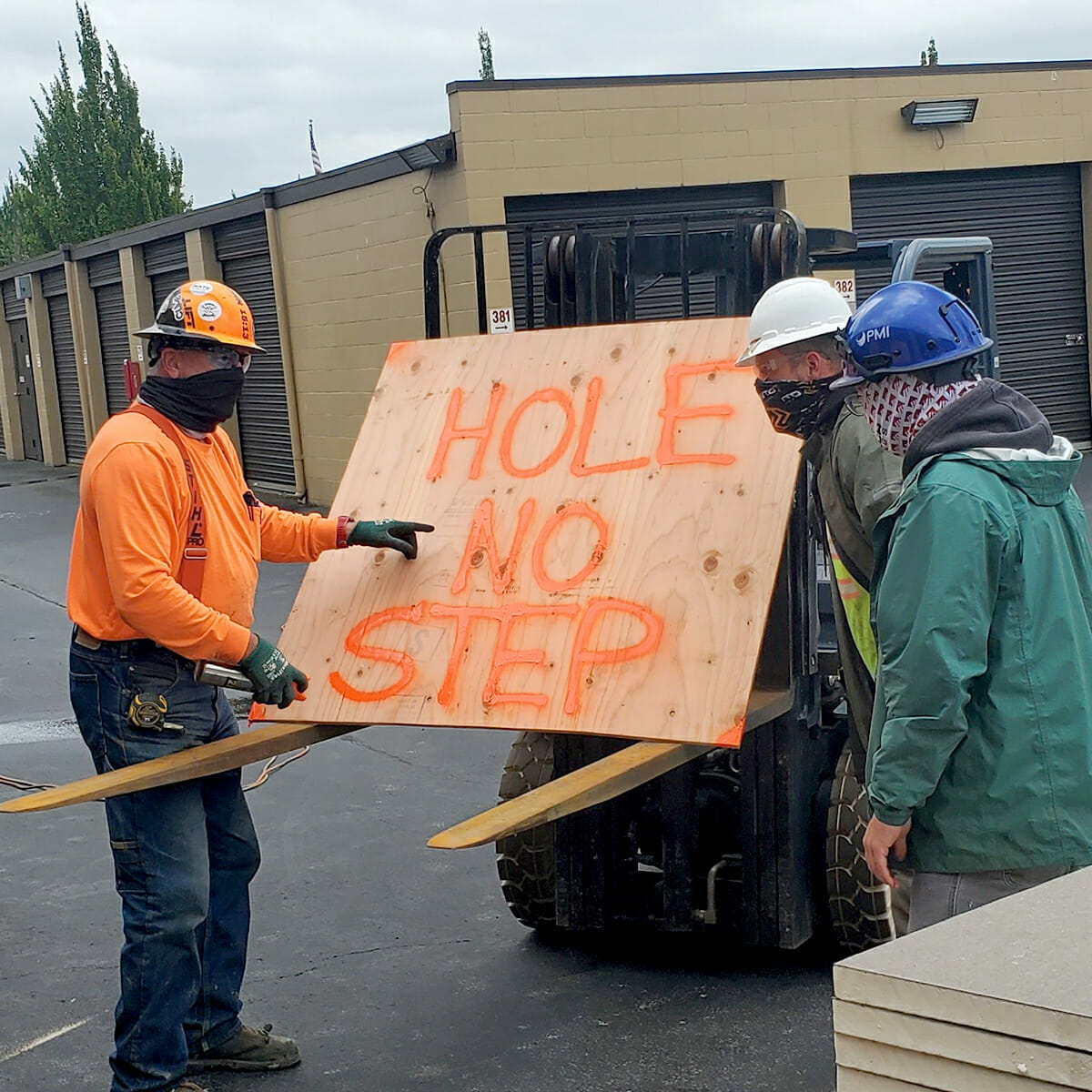Safety Topic – Safety Leadership
New Braunfels, TX, October 26, 2022

Being a great safety leader isn’t easy. Frankly, in some cases it might be intimidating and uncomfortable. Speaking up for safety can be challenging when we are faced with looming deadlines, the desire to get home after an extended out of market assignment or when in the presence of someone that has been doing their job for a very long time. The best safety leaders motivate teammates to always take their safety and the safety of other serious. You know these folks, some are sitting right next to you right now. Others are in supervisory roles which you might only see on brief occasions. These are people who not only follow safety protocols to the letter but speak up in a constructive way when they see that others could be doing something in un safer manner.
The courage to put safety first can be scary. Scary because we are afraid to be ridiculed, called names, or be the one that slows down a job. The fact of the matter is we need everyone to consider themselves safety leaders regardless of your position in the company. Everyone from civil crews to electricians and even our own family members play a critical role in safety. When we all consider ourselves safety leaders and speak up for safety, we are truly living our core value of Safety. To dig a little deeper into some of the details around being a safety leader, we want to cover three key points.
- Have the courage to speak
- Lead by example
- Know that safety leaders are not just managers
- Have the courage to speak up
Silence is not golden. Silence is dangerous. As human beings, we have a ridiculous amount of fear or uncertainty to speak up, especially when it comes to safety. We don’t want to be wrong, hold up progress or be the reason we must stay another night out of town. Everyone has the right to speak up when it comes to safety, and none should be uncertain about raising our hand for clarifications. Now there can be times when speaking up in the wrong way can make good intentions come across in the wrong way. We are all professionals and are expected to always act that way. If the only reason you want to call someone out is to be critical or flat out rude, then you’re going about this the wrong way. Remember, you catch more flies with honey! When we see unmitigated risks and keep quiet, we don’t have our family member’s best interest at heart. When we don’t ask for a 2nd opinion in times of uncertainty, we could be allowing a compliance violation to occur right before our eyes. Just because someone has been doing a certain task or using a specific tool for a long period of time without incident doesn’t always equate to doing a job safely or within compliance. Have the courage to ask the tough questions and get the answers you (or maybe even they) need. When new tasks or tools are presented and we just aren’t sure how to execute safely, have the courage to ask for help. Asking for help is not a sign of incompetency or weakness, it’s an attribute of a strong leader! The few minutes it takes to get clarification might just be the difference in going home safe or not at all.
- Lead by example
This bullet point is easy to cover. Simply put safety leaders walk the walk and don’t just talk the talk.
Whether you are in the office, training session, or on a work site, demonstrating a strong commitment to safety is imperative. Workers will be less likely to develop bad habits or find shortcuts around the rules and procedures when they see people that are considered leaders following the rules. Supervisors should always show, rather than just tell their workers how to follow through on safety procedures. If we see our leaders breaking our own safety rules, the the team won’t take safety seriously either. Since people are relying on leadership to guide them in the right direction, it’s only logical that we all follow suit in identifying unsafe workplace behaviors.
- Know that safety leaders are not just managers or supervisors
The most common misconception is that safety leadership is made up solely of upper management or executives. Any member of a team can be a leader if they are able to influence the activity of the team in a way that ensures safety practices and policies are met by everyone. In truth, safety leaders are the individuals with the greatest understanding of the importance of safety, and who can inspire and communicate with their fellow teammates. You become a leader when you repeatedly do the right thing and inspire others to follow suit. A key characteristic for safety leadership is the real commitment to help people stay safe. This genuine concern, along with the ability to inspire others to show that same concern, and follow safety regulations, is vastly different than someone commanding workers to follow the rules.
So, the next time you see something unsafe or just unsure about a situation have the courage to make the choice to be be a safety leader!
